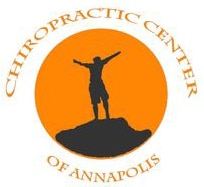
Chiropractic Center of Annapolis
1833 Forest Drive
Suite D
Annapolis, MD 21401

More Chiropractic Care Articles
You Gotta Have Heart
For the last 24 years, the Association of Chiropractic Colleges has sponsored the premiere conference on chiropractic research and education. Case studies of more unusual patients have been accepted as peer-reviewed poster presentations over the last five years.
This year one of the posters will describe the treatment and immediate response of a 64-year-old man with a history of atrial fibrillation and arrhythmia dating back to 2002. In 2014 he had a cardiac ablation (whichis a procedure to scar or destroy tissue in your heartthat's allowing incorrect electrical signals to cause an abnormal heartrhythm) via catheterization (cardiac ablation usually uses long, flexible tubes catheters inserted through a vein or artery in your groin and threaded to your heart to deliver energy in the form of heat or extreme cold to modify the tissues in your heart that cause an arrhythmia) of his left atrium, which helped initially.
However, within a year and a half the effectiveness lessened and the patient reported a resting heartrate of 100. He meticulously maintained a diary of his pulse rate taken twice daily. For the week prior to the visit, his heart rate averaged 135 beats per minute. Within five minutes of his treatment the pulse dropped to 79 and the average over the next two weeks average 89 with a low of 55 and a high of 109.
What was the treatment and why did it work? Treatment consisted of adjustments to the upper cervical and upper thoracic spines, cranial adjustment, release of tension in the left iliac artery and diaphragm, and chiropractic manipulative reflex technique (CMRT) for the heart.
The heartbeat is regulated by the autonomic nervous system. The sympathetic division exerts a facilitatory effect increasing rate, whereas the parasympathetic has an inhibitory influence. The central nervous system controls the relative levels of sympathetic (originates in the first five thoracic spinal segments for heart) and vagal (originates in the brain) activity, usually in a reciprocal fashion; that is, as sympathetic activity is increased, parasympathetic activity is usually diminished, and vice versa. Autonomic dysfunction is a primary trigger for atrial fibrillation. If there is disturbance in the functional nerve output due to compression or distortion this can be corrected by a chiropractic adjustment restoring better function and control.
Release of diaphragmatic spasm or tension may help as the phrenopericardial ligament connects the heart directly to the diaphragm. If there is abnormal tension or slight adhesions of the iliac arteries this may create a piezo-electrical effect on the conductivity or response of cardiac collagentissue to electrical stimulation. CMRT can assist in bringing a healthier balance to the autonomic nervous system.
Although a chiropractic approach will certainly not “cure” all heart arrhythmias, there is a subset of the population that may indeed respond to such treatment. For those for whom a medical approach has not been successful perhaps there may be a chiropractic answer.

















